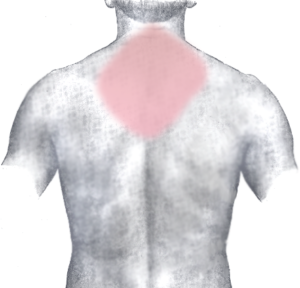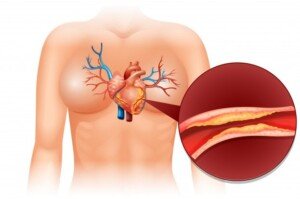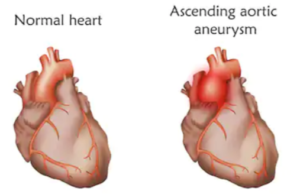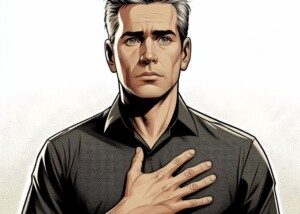
There are 3 serious conditions – OTHER than muscle or nerve problems, injury, poor posture, arthritis, infection and cancer that can cause upper back pain.
The most common causes of upper back pain are musculoskeletal in nature.
Other common causes for pain affecting just the upper back are a herniated disc, pinched nerve and injury.
Certain causes are obvious such as an injury or a new workout routine. Other causes such as poor posture and arthritis can be well under the sufferer’s radar.
Lung cancer can cause upper back pain, but this is rare.
Arthritis and infection as causes can be determined by your doctor.
But there are three additional conditions – serious — that can potentially cause pain in the upper back.
• Aortic dissection
• Heart attack
• Coronary artery disease
“People don’t think about it much, but it actually takes some practice for your body to learn to localize pain,” says Christopher J. Hanifin, PA-C, who was previously a physician assistant in open heart surgery with Cardiothoracic Surgery of South Bend in South Bend, IN.
“We have all twisted an ankle and burned a hand in the kitchen, so our bodies know exactly where the problem is.
“When the body senses pain coming from an area that almost never hurts – such as your heart – it can have difficulty figuring out what is going on.
“Sensory fibers from a bunch of different areas are plugged into the spinal cord relatively close together, so when the input is from someplace new, the body might ‘think’ the pain is coming from elsewhere. This radiating of the pain to unrelated areas is called referred pain.”
Heart Attack and Coronary Artery Disease As Causes of Upper Back Pain

Freepik.com
“The pain associated with an insufficient blood flow to the heart – which can cause angina or myocardial infarction – is sometimes difficult for the brain to localize,” explains Hanifin.
“It is commonly referred to one or both shoulders, arms, the upper back, the neck or the jaws and teeth.
“The hallmark of the pain is central chest pain which is usually described as a pressure sensation.”
Aortic Dissection Pain
Hanifin explains, “In an aortic dissection, a crack develops in the wall of the artery [aorta], and blood begins to tear the layers of the arterial wall apart.

Shutterstock/Veronika Zakharova
“The aorta lies along the back of the chest adjacent to the spinal column, so the pain is usually felt as a severe back pain. Patients usually accurately describe the pain as a tearing sensation.”
Upper back pain from an aortic dissection can also be dull – put persistent and never getting better. It’ll almost always be accompanied by severe chest pain, which patients have also described as “ripping.”
When a tear occurs in the aorta, the severe pain is usually sudden in onset – rather than starting out as vague and gradually increasing on the pain scale.
An aortic dissection, like a heart attack, is a medical emergency where minutes count.
The dissection is actually a rupture of a pre-existing aneurysm somewhere along the ascending or descending aorta. An aneurysm is an abnormally enlarged or bulging section of an artery.
 Christopher J. Hanifin, PA-C, is currently Department Chair and Assistant Professor, Department of Physician Assistant, Seton Hall University,
Christopher J. Hanifin, PA-C, is currently Department Chair and Assistant Professor, Department of Physician Assistant, Seton Hall University,
 Lorra Garrick has been covering medical, fitness and cybersecurity topics for many years, having written thousands of articles for print magazines and websites, including as a ghostwriter. She’s also a former ACE-certified personal trainer.
Lorra Garrick has been covering medical, fitness and cybersecurity topics for many years, having written thousands of articles for print magazines and websites, including as a ghostwriter. She’s also a former ACE-certified personal trainer.
.









































